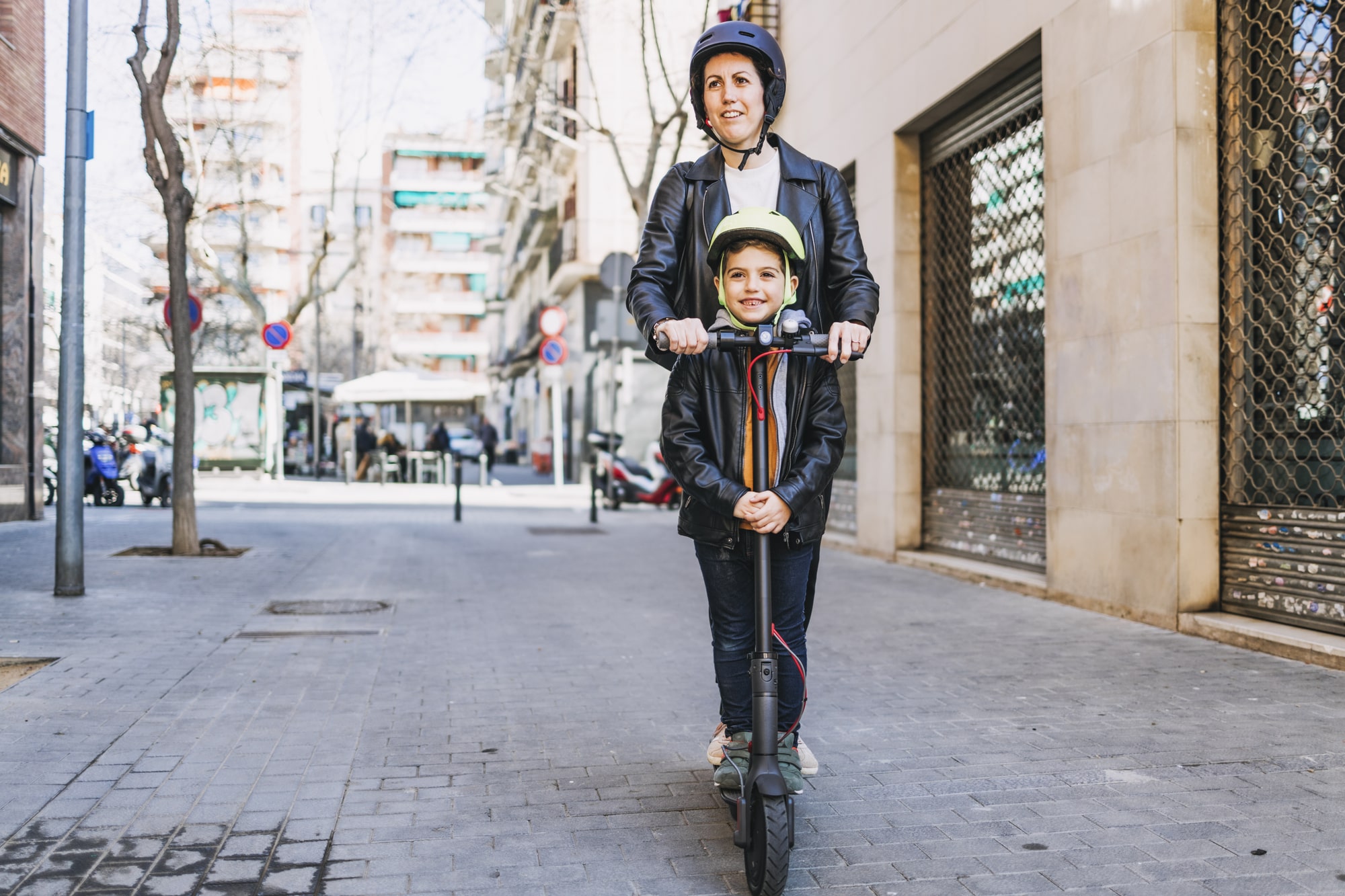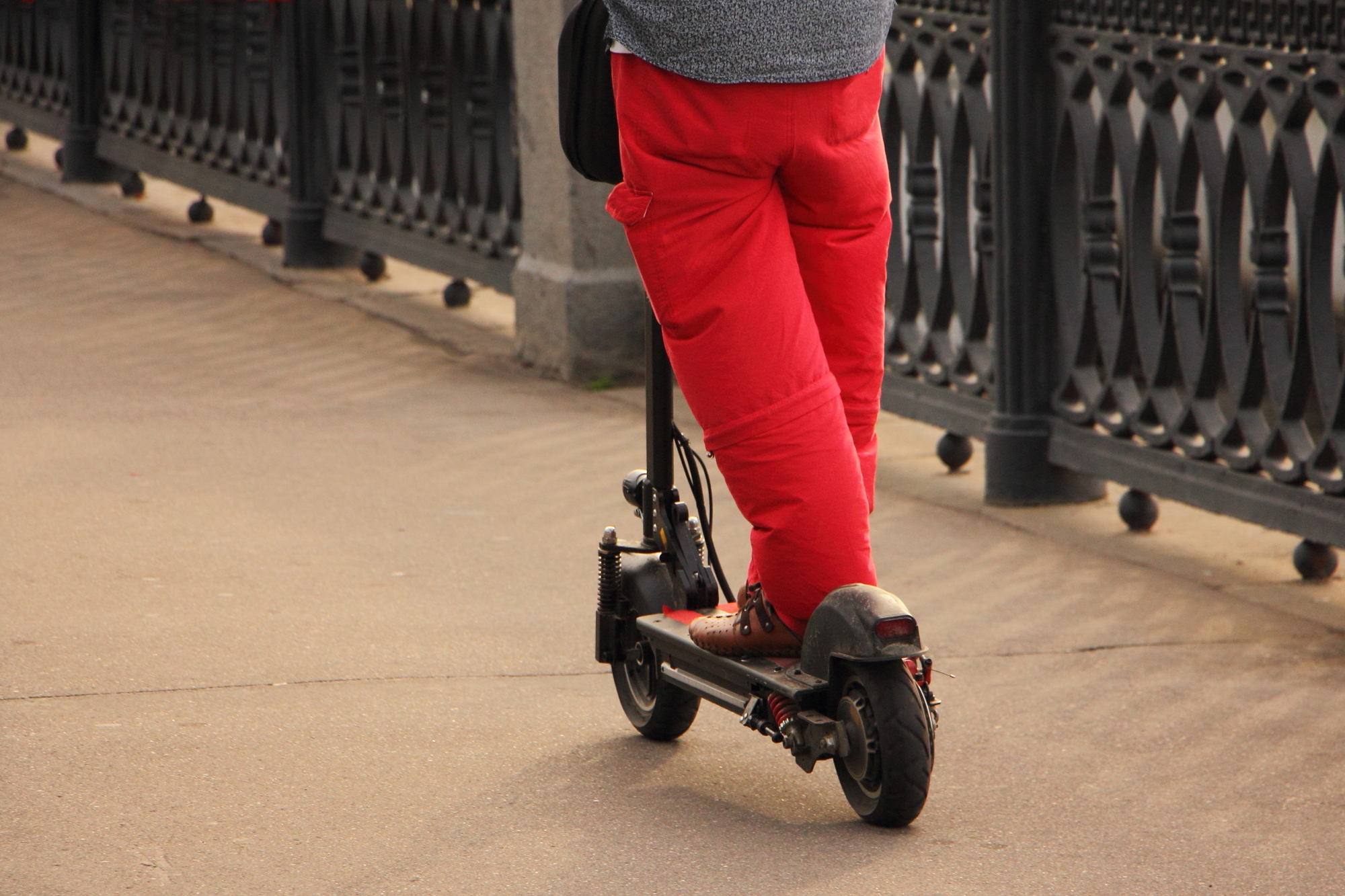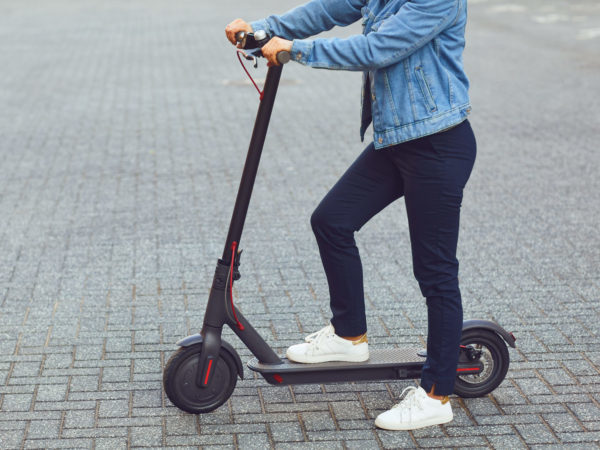Table of Contents
It’s a veritable fact of life that wet weather and electric scooters simply don’t mix. If you’ve ever dealt with a rusty or corroded motor, then these statements will sound awfully familiar to you.
With winter upon us, you may want to store your e-scooter.
While winter riding is still possible, it’s a bad idea to ride your scooter in the cold weather, especially if you live in areas with heavy snowfall.
Electric scooters are especially sensitive to the cold, slush, and snow, which inhibits the chemical reactions in the lithium battery, leading to a decreased battery’s capacity and performance.
Riding an e-scooter on snow is also certainly not safe owing to the reduced ability to brake (increased braking distances) and steer with an increased probability of slipping. With such grave effects, you’ll undoubtedly want to store your e-scooter throughout the winter months.
After all, it’s just a few months of storage; then you’ll get back to your riding ways.
Storing your e-scooter is not as simple as it sounds. It calls for systematic preparation with proper storage in the right places. How you properly preserve your e-scooter will ultimately determine its performance the following season.
So, how do you store your e-scooter in winter amidst the damning temperatures, drop, snow, creaks, and even pests?
With one eye on Mother Nature and another on safety precautions, here’s what you need to keep in mind when storing your electric scooter this winter:
Where to Store Your E-Scooter during the Cold Weather

Since electric scooters are pretty compact, they can be seamlessly stored indoors.
Thanks to its compact folding design, some such as the Glion Dolly – it can even fit in a wardrobe. When storing your e-scooter, you’ll need to keep it in areas around 10 degrees, dry areas with no moisture whatsoever, and clean well-ventilated areas without clouds of dust and dirt.
Never store your e-scooter in places such as a basement with moisture, extremely cold places, areas prone to flooding, places next to a heat source, and a room without heating.
You could also decide to hang the scooter on the wall in your room, basement, or even garage, provided it’s heated.
Several electric scooter wall holders are readily available in stores or online shopping websites such as Amazon. Xiaomi scooter wall mount is often recommended thanks to its non-slip stripe design, easy installation, and compatibility with all sizes of electric scooters.
Some of the best places to store an e-scooter in the house include a warm garage or shed an attic without direct sunlight, moisture, or dust, and the heated workshop.
It’s best to have a humidifier in these rooms to prevent condensation, which forms on the metal parts leading to corrosion.
You could also pack your e-scooter in a breathable storage bag after you’ve inspected and cleaned it.
The storage bag will come in handy to protect it from weather elements such as extreme cold, dust, and moisture which can cause corrosion even in cold weather.
However, always ensure that the storage bag is breathable. Plastic, non-breathable bags can trap moisture, causing corrosion and mould growth issues.
And if you’re hands-on with DIY builds, you can build an electric scooter storage box to protect your scooter.
The storage box should preferably be enclosed to protect the scooter from weather elements and safeguard it from theft or unauthorised access.
If you’re on a tight budget and can’t afford e-scooter storage bags, you can go for dry storage kits, i.e., large plastic bags with water-absorbing packets.
These bags are cheap yet very effective in keeping preserved scooters dry and dust-free. They typically wrap the scooter and enclose them in a hermetically sealed state.
And here are some places you shouldn’t put your electric scooter:
- Areas with high humidity, such as a basement where mould and mildew may build up on the device over time
- In an uninsulated attic or garage where temperatures fluctuate tremendously throughout the year and can cause severe damage to any parts made of plastic
- Areas with pesticides and other hazardous chemicals – these substances may permeate through plastic and rubber components quickly and cause damage if left unchecked.
- Areas with direct sunlight or other sources of heat that could cause damage to any components made of plastic or rubber
How to Store Your Scooter during Winter
Check out these tips for storing your e-scooter in winter.
Preparing Your E-Scooter for the Long Winter Storage
You need to thoroughly prepare your scooter for storage in the long winter season. Here are the necessary steps in preparing an e-scooter for the long winter storage.
Inspect the Scooter
The first thing you’ll want to do is to inspect the e-scooter to establish anything that may cause a problem in the future.
Take a look around the scooter, looking at the issues such as scratches, dents, corrosion, and cracks. Take a look at the e-scooter keenly and search for any potential problems.
Clean the Scooter
Next, clean the e-scooter to get rid of any water or dirt which may cause corrosion during storage.
If water or any other corrosive agent gets inside the e-scooter, it could cause rust and, even worse, damage the electronics when the scooter is under storage.
Therefore, it’s crucial to have your e-scooter spotless before storing it. Depending on the water-resistance rating of your e-scooter, you can either clean it by hosing it down or just wipe it using a damp cloth to remove dust and dirt from the scooter.
Drying and Waxing
Once your e-scooter is spotless, the next step is to dry it thoroughly.
As mentioned earlier, water causes corrosion and can damage electronic components. You can use a hairdryer to dry off your electric scooter or simply leave it in the open for a day to dry off completely.
After drying, you’ll want to wax the scooter. Waxing is essentially treating the paints and finishing to safeguard them from corrosion and keep them fresh for the next season.
While it’s not mandatory, waxing using anti-corrosion products such as the XCP Rust Blocker, 100 Corrosion Protectant, and ACS TC200 is highly recommended for protecting your e-scooter during winter.
Lubricating
Once your e-scooter is all cleaned up, dried, and waxed, the next step is to lubricate the mechanical parts.
You can use a silicone bicycle spray to lubricate the movable mechanical components, including the wheel axle, brake discs, footrest mechanism, folding mechanism, and rubber connects, including plugs and seals.
Lubricating these parts will prevent corrosion and prevent microcrack formation, damaging the moving parts.
When lubricating, never use grease, thick lithol, or similar lubricants. This is because these lubricants don’t get into hard-to-reach places and collect sand, dust, and dirt.
The hugely popular WD-40 is also not recommended since it contains solvents that can react with the paint and accelerate the wear and tear of the scooter’s metallic parts. Always use silicone grease such as the bicycle spray lubricant to be on the safe side.
Preparing the wheels
To prevent the formation of microcracks on the tyre and maintain the quality of the rubber, you need to coat the tyres with bicycle silicone grease and automobile blackener rubber.
The wheels also need to be inflated or deflated based on how the electric scooter will be stored. If you’re going to hang the scooter or fold it and place it in your wardrobe, the wheels should be deflated to a pressure half the manufacturer’s recommended values.
On the other hand, if the scooter is stored standing on the floor, the wheels should be left inflated to the maximum recommended pressure. Of course, this only applies to pneumatic tyres and not solid tyres where the pressure can’t be adjusted.
If the scooter has solid tyres, it’s recommended you store the scooter by hanging it on a wall holder or store it lying on its side on the floor.
Preparing the battery
Most electric scooters are fitted with Lithium rechargeable batteries which require extra care when storing in winter.
It’s crucial to preserve the battery correctly during winter since improper storage could damage it leading to a reduced range the following season.
Before storage, the battery should be charged to 50-70% and recharged to that level at least once per month to prevent an irreparable depth discharge. This means that you’ll need to be monitoring the battery level when your scooter is under storage.
The ideal temperature for storing the battery should be between 15 – 25 °C. If your e-scooter has a non-removable battery, it should be stored at room temperature.
Setting up the e-scooter for storage.
Once you’ve done all the steps discussed above, it’s now time to set up your e-scooter for storage.
You need to turn off the scooter, fold it and lock it with its own mechanism as well as external safety measures.
Next, place it in a breathable, waterproof protective cover. Store it in a dry, clean, non-humid place, preferably at room temperature- not too warm or too cold.
Caring for the Scooter’s Battery during Winter Storage
When your e-scooter is under winter storage, the Lithium-ion battery is one of the most essential components that should be keenly taken care of.
Scooter batteries are designed to last for a particular number of charging cycles. For instance, if your e-scooter is rated 1000 cycles, it means that the battery performance would drop to around 80% of its original capacity after about 1000 charge/discharge cycles.
However, the battery’s cycle is influenced by several factors, including storage in winter.
Improper winter storage can drastically reduce the cycle and ultimately reduce the battery’s lifetime. For optimal performance next season, it’s crucial to store the battery in the right conditions and take care of it properly.
The optimum temperature for storing a scooter’s battery is 15 – 25 °C. Never store the scooter’s battery below 5 °C / 41 °F or above 45 °C / 113 °F.
Preferably keep the temperature at room temperature. What’s more, the battery should be stored in a clean, dark, and dry place.
Experts tips for caring for your scooter’s battery in winter
Charge your Battery before Storage
Before storing your scooter, you’ll need to charge it to 50-70%.
E-scooters are fitted with a deep cycle battery which can only stay functional and last longer when charged consistently. Leaving the battery discharged for an extended period would cause depth discharge damaging the internal battery components.
The battery will not hold the charge as required once taken out of storage.
To avoid irreparable battery storage, you’ll want to charge the battery to at least 50% before you put it in storage. Before charging the battery, ensure you bring it indoors to attain room temperature.
Never charge the battery below 0 Celsius or 32 F, as it would kick off a chemical reaction that can damage it.
What’s more, don’t charge the battery fully to 100% if you intend to winterise your e-scooter.
Charging to a full capacity and storing the scooter for a long winter period will significantly reduce the life cycle capacity. A 50-70% charge is the perfect storage voltage to preserve the battery in a healthy state.
Disconcert the Battery from Your Scooter
If your scooter’s battery is removable, you can detach it from the scooter and store the battery at room temperature in a dry, clean, and non-humid place such as your wardrobe or a heated storage room.
However, not all scooters allow the battery to be entirely removed.
In such cases, you need to disconnect the battery leads to prevent the scooter from draining the power passively. Besides, disconnecting the scooter prevents possible corrosion of the leads, which causes costly power leaks.
Protect the Battery from Temperature Fluctuations
Extreme temperature fluctuations, which are common in winter, can cause a battery to lose charge while in storage passively.
Once you’ve stored your scooter or the battery in a cool, clean, dry place, you should aim at keeping the temperature at an optimum level, i.e., not above 41 degrees or below 15 degrees Celsius.
Recharge the Battery Occasionally
As mentioned earlier, you need to maintain the scooter’s battery charge at 50-70% to prevent irreparable depth discharge.
However, even when the battery is disconnected, it still loses some charge from just sitting idle. About 1-2% is lost every day and may cause the battery to run out of juice in the long run.
To prevent the battery from running low when left disconnected for months on end, you’ll need to recharge it periodically.
This means that you’ll need to monitor the battery while in storage and make a point of plugging it into a charge after one or two weeks to top up the charge to a least 60%.
This will keep the charge at optimum levels and prevent a depth discharge which could damage the battery components. Also, always before recharging the battery periodically, bring it to room temperature to avoid sudden heat damage.
The temperature in the room should be between 5 °C and 45 °C (32 °F to 113 °F).
Charging the scooter’s battery outside this temperature range can damage it. For instance, charging Li-Ion batteries at temperatures below 0 °C can cause plating- complete damage of the e-scooter, causing its failure. Also, don’t charge it to a full charge.
If you don’t want to monitor the scooter’s battery and recharge it once a month, you can use a trickle charger.
This device slowly charges your e-scooter’s battery, ensuring it never drains out completely. However, it should never be used in rooms without heating since charging a lithium battery below 0 °C will damage it.
Tyre Care during Storage
Taking care of your scooter’s tyres relies heavily on the storage method you opted for.
If you choose to store your electric scooter by hanging it on the wall using a wall holder or folding the scooter and placing it in a compact space, you should ensure the wheels are deflated to half the recommended pressure.
This comes in handy to avert damages to the tyre carcass due to excessive pressure build-up during storage.
If you choose to store your e-scooter in the garage with the wheels on the ground, perhaps it doesn’t have a folding feature, or it’s too big to hang on the wall-you should ensure the tyres are over-inflated.
This is because air leaks out over time, and over-inflating the tyres will compensate for the leaked air to help prevent damage to the tyres.
The tyres should also be covered with automobile blackener rubber to prevent corrosion.
What’s more, you need to check the tyres occasionally so that you can inflate or deflate them as required to avoid damage. To help you remember the necessary values, you might want to place a note on the scooter’s tyres reminding you of the correct storage pressure.
If you’re storing your e-scooter in the garage, it’s recommended that you store it with the tyres off the ground.
You can either use a paddock stand or a piece of rag to keep your e-scooter off the floor. This will prevent your wheels from getting flat-spotted, leading to damage to the tyre carcass.
Therefore, make sure your scooter wheels are not directly contacting the cold concrete floor.

Controlling Pests
Pests such as rodents can be a nuisance during winter.
Mice can eat up the electric scooter’s crucial components, rendering it non-functional. When your e-scooter is under storage in your garage, basement, attic or shed, or whatever place in your home, you need to implement ways to ward off pests.
There are various effective ways to keep rodents out of your house in winter.
You can use natural or artificial pest repellants, seal off pest entry points, use mouse traps, and do a thorough cleaning of your floor space in the shed or garage.
Also, keep the corners in the house open and clear and store any pet food or seeds in air-tight containers.
Securing your E-scooter Under Storage
The last thing you’ll want to hear is that your e-scooter was stolen while under storage.
So, it is vital to implement additional security measures to secure your scooter in storage. In addition to the security feature that comes with an electric scooter, such as locks, you can implement additional security features such as external locks.
These locks come in various forms, notably cable lock, heavy-duty chain lock, U-lock/D-lock, disc lock, and grip lock.
You can also decide to invest in other security measures such as a scooter alarm and a scooter tracking system, depending on the scooter’s model and the safety of your neighbourhood.
A scooter alarm can detect even the slightest motion on the scooter and inform you whether the scooter is changing location via an app.
You can also choose to install CCTV cameras in the shed or garage to monitor the scooter 24/7 and prevent theft. Some scooterists also choose to store their scooter in a mini bank vault for maximum protection.
You can implement several methods to secure your e-scooter based on your budget, security of the neighbourhood, and more.
While theft isn’t a big issue among scooter enthusiasts, you should never underestimate the willpower and resourcefulness of a potential thief. Therefore, it’s vital to secure your e-scooter when under storage.
Dos and Don’ts When Storing an Electric Scooter
Dos
- Clean the scooter thoroughly before storage
- Dry off the scooter completely and wax it.
- Lubricate the tyres, mechanical parts, and rubber elements with silicone grease
- Deflate or inflate tyres as per your method of storage
- Charge the battery to at least 50% before storage
- Cover the charging port during storage
- Place the scooter in a breathable, protective cover
- Fold the scooter and lock it before storing
- Store the scooter in a dry, clean, and non-humid place, preferably at room temperature.
- Remove the battery from the scooter before storage. In cases where the battery cannot be removed, detach it from the leads to prevent power leaks.
- Charge the battery once every month to attain a 50-70% charge level. If you’ll forget or will not have time for this, attach the battery to a trickle charger to keep the voltage at the recommended levels.
- Protect the battery from temperature fluctuations
- Place the scooter on a carpet or paddock stand to prevent direct tyre contact with the concrete floor. This is essential to avoid flat-spotting.
- Implement the necessary measure to control pests during winter
- Secure your scooter by implementing the required security measures.
Don’ts
- Don’t store your e-scooter with moisture and dust or grim as it could cause corrosion of vital parts.
- Don’t store the scooter in a freezing, humid place prone to flooding.
- Don’t charge the battery to full(100%) before storage
- Don’t cover the scooter in a plastic, non-breathable cover
- Don’t charge the battery at temperatures below 0 °C as it could damage it. First, bring it to room temperature before charging it to avoid heat damage
- Don’t over-inflate the wheels to prevent rubber cracks or flat spots.
- Don’t leave your electric scooter unsecured, as thieves don’t take a break just because it’s winter.
- Don’t lubricate your scooter using thick lithol or similar lubricants.
After Riding your Scooter in the Snow
The first step to start on the right foot is proper cleaning and drying your ride after each use.
This process will depend on how much snow and salt was used on the roadways near you, but it will require removing all snow from the decks using a brush or broom (or even a leaf blower). Salt tends to be very hard on the finishes of your ride, and you should attempt to get rid of it using a degreaser spray.
After the surfaces are clean, we recommend applying wax or silicone-based products to minimise corrosion and scuffing. If you don’t have access to one of these products, petroleum jelly will work nearly as well.
Final Thoughts

The winter season is upon us, and the best thing you should do is store your electric scooter.
While it’s possible to ride an e-scooter in winter, it’s not recommended due to the difficult weather conditions and extremely low temperatures, which compromises its performance.
Worse off, the road grime can corrode the metallic parts of your scooter, causing unprecedented damage.
So, to be on the safe side, you’ll want to store your e-scooter during winter.
The last thing you want to do is let your electric scooter sit in the cold during those harsh winter months.
If you’ve been riding it for a while, then you should know that there are some very specific dos and don’ts when storing your electric scooter in the wintertime. It’s essential to ensure that everything is put away correctly not to ruin any of its components or cause damage.
How you preserve your scooter during winter will ultimately determine its performance the next riding season.
By following the above dos and don’ts when storing your e-scooter in winter, it will roar into action in tip-top condition during the spring riding season.
Simply uncover the bike, inspect it to ascertain all components are functional, fully charge the battery, check the pressure, and you’re ready to ride again.

